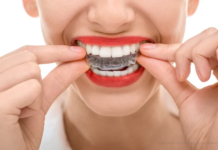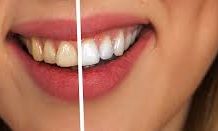A good oral hygiene plays a crucial role in determining your overall health levels and well-being, but many a time, even the teeth most taken care of fall prone to oral problems like cavities and stains. Most people cannot determine the difference between a cavity and a tooth stain and end up getting confused between the two. This article is based on Cavity vs. Stain, where we will teach you how to distinguish between these two. Stay tuned.
How to spot the difference between a cavity and a tooth stain?
The Cavity vs. stain comparison can be a little tricky, but if you notice carefully, you’ll be able to spot the significant difference between the two. Below are some points that will help you distinguish between a cavity and a tooth stain. Keep reading
While stains resemble a lot to tooth decay in their appearance, the basic thing that differentiates them from the latter is that a tooth stain seems to shrink after some time, like brushing or due to a change in the diet; tooth decay, on the other keeps growing bigger when left untreated for a long time.
Cavities are also popularly known as tooth decay and are permanent damage around your teeth; unlike stains, a Cavity causes a hole in your teeth that gets bigger and deeper with time.
But sometimes, these basic differences aren’t enough to spot the difference between a stain and a cavity so let’s look at other parameters of Cavity vs. Stain.
Spreading area
When discoloration occurs on your entire tooth, you can probably consider it a stain. A single spot or hole on the tooth is more likely to be a cavity.
Stains generally spread over a larger area and are mostly yellow or light yellow in color. On the other hand, Cavities occur as a small spots on your tooth and get bigger and deeper with time. Cavities can be of a black, brown, or gray color.
Sensitivity
In case of a cavity, you may experience sensitivity to cold or hot drinks and food times around the affected tooth. This sensitivity can increase with time. Whereas in the case of stains, you will not experience any such sensitivity at all.
Pain
When left untreated for a long time, a cavity can get bigger and deeper, and the mild sensitivity can increase to consistent tooth pain. Pain generally occurs when the Cavity starts affecting your pulp which has nerves. This pain, when left untreated, can even affect your cheek and ears.
On the other hand, Stain does not include any such problems and can be removed through regular brushing.
Tooth hole
While a tooth stain is just a spot on the surface of your teeth, a cavity is a spot that gradually develops into a hole that keeps getting bigger and deeper with time. Sometimes, a cavity in a single tooth can get bigger and even affect the surrounding teeth when left untreated.
Cavity vs. stains: Causes
Several causes can lead to tooth decay and tooth stain. Both have different causes and different treatments. Keep reading
Causes of Cavity/Tooth decay
Experts consider plaque to be the major cause of tooth decay and Cavity. Those of you who do not know what “Plaque” is, a layer composed of bacteria, mucus, and food particles that form around the teeth and lead to tooth decay. They suggest that over time when excess plaque develops on and around the surface of the teeth, the acid present in it destroys the enamel of the tooth, eventually leading to tooth decay or Cavity.
As the protecting film of your tooth that is enamel gets weak, the hole in it gets bigger and deeper, causing a cavity.
Some common causes of plague and tooth decay are as follows:
- Consumption of too much acidic and sugary food or drinks
- Poor oral hygiene like not brushing the teeth regularly or properly and flossing regularly
- Dry mouth
- Less fluoride
- Presence of too much acid in the mouth
Causes of Tooth stain
The most common cause behind tooth stains is residue from food and drinks. These stains can remain for some time and disappear even before you notice them.
Consumption of some very common drinks can also actively cause stains to appear on your teeth; some of these drinks include coffee, tea, wine, soda, etc.
Tooth stains can even occur after eating tomato-based products or food items with tomatoes as a major ingredient. You may exclude such items from your diet to quickly remove these stains.
Some other causes of stains include:
- Staining teeth is very common in people who actively smoke and consume tobacco.
- Sometimes, aging or other factors like harsh brushing can cause the tooth’s white enamel to chip off and expose the yellow teeth underneath.
- Consumption of too much fluoride can also lead to white spots on the teeth.
- The building up of hardened plaque called tartar can often lead to yellow stains on or around the teeth.
- Certain medications like antibiotics and antihypertensive medicines can also lead to tooth stains.
These were some of the most common causes of Cavity and Stains; we hope you liked reading them. Next, we move on to the treatments that can help you get rid of these oral problems. Stay tuned
Cavity vs. Stains: Treatments
Tips to get rid of tooth stains
- Excluding or reducing the consumption of drinks like coffee, tea, wine, etc., can help you get rid of tooth stains.
- Regular brushing can remove the discoloration of teeth very quickly. Brushing your teeth twice a week can help lighten the stains on your teeth.
- Using at-home teeth whitening treatments can also help get rid of tooth stains. Some of these products, like whitening toothpaste and teeth whitening strips, can be easily found at the drugstore.
- Professional teeth whitening treatment. This one is a little expensive option but can give you long-lasting results. Seek the help of a dentist for deeper stains and fast whitening.
Treatment for Cavities
- No treatment for cavities can be done at home; there is no way you can cure those deep holes in your teeth. Instead, you can stop your Cavity from spreading in the early stage by improving your oral hygiene, regular brushing, and reducing the consumption of Cavity causing food items.
- Tooth filling – one of the most common and effective treatments for tooth decay is filling. It includes the removal of decay from the tooth and filling it with a special resin. The results of this process are long, lasting and your tooth becomes like it was before the Cavity affected it.
- Crowns – in cases of severe tooth decay, where the patient’s tooth has severely decayed and has lost its shape, the dentist might remove the tooth decay and place a cap over it; this will prevent the tooth from any further decay and will protect it.
- Root canal – in some instances, when the Cavity is left untreated for a long time, it reaches the pulp of your tooth and damages the nerve present in the pulp. In such cases, a root canal removes the affected nerve and cures the injury.
Cavities and treatments are very painful and can even lead to other problems, so it is better to take precautions than go through the treatment. Below are some precautions that can help you prevent severe tooth decays. Keep reading
- Opt for a professional dental cleaning at least twice a year to deep clean your teeth.
- Make sure to brush your teeth at least twice a day and floss once a day; this will keep your teeth clean and your breath fresh.
- Reduce your consumption of acidic and sugary foods or drinks like soft drinks, soda, and coffee.
- Use a mouthwash with fluoride to gargle your mouth for at least 30 seconds after brushing. This will provide additional safety to your teeth.
We hope you liked this article on Cavity vs. Stain and can now easily distinguish between the two. Let us know how you liked the article. Until then, keep your teeth clean and your beautiful smile safe.
















